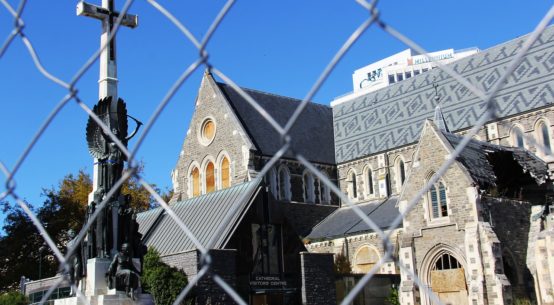
Wellington – February 15, 2016
Experience of recent earthquakes in Christchurch has shown the importance of both individual and collective preparedness, New Zealand Planning Institute (NZPI) expert says.
Just a week out from the fifth anniversary of the February 22, 2011 earthquake, Christchurch was rocked on Valentine’s Day by a severe 5.7 shake which jolted everyone’s emergency country’s plans.
Dr Wendy Saunders, a NZPI member and natural hazards planner with GNS Science, says research shows people underestimate the consequences of an event and overestimate their personal preparedness.
Community resilience is enhanced by social connections, pre-disaster – however people generally adapt to the new conditions. This is enhanced through good connections within their neighbourhoods and workplaces, Dr Saunders says.
“Due to its location and environment, New Zealand faces many potential disasters. In some cases, such as a weather related or volcanic disaster, there may be time for a warning. But an earthquake or a tsunami close to land could strike without warning.
“All disasters have the potential to cause disruption, damage property and take lives. So it’s vital that you prepare now. The website www.getthru.govt.nz/ provides details on how to get ready for a disaster, including: find out about possible disasters that could affect you; make and practice a household emergency plan; have some emergency survival items stored at home; and a getaway kit in case you need to leave home in a hurry.
“People in Christchurch need to be aware that earthquakes will continue to shake the area for some time yet. As such, they need to be prepared, both at home and work, for the unnerving earthquake pay us a visit, and associated with that the possible disruption of services. Remember – drop, cover, hold in the event of a large earthquake.
“Information on preparedness can be found on the Ministry of Civil Defence and Emergency Management website http://www.civildefence.govt.nz/get-ready/). There are key messages that all businesses should understand prior to initiating or reviewing continuity planning arrangements.
“It is not an option to be unprepared. Disasters do happen, but you can ‘make the mess less’ and hasten a return to normalcy through prior planning and committing to mitigation and preparedness activity. This can save time and money in the long term.
“Risk assessment must consider risks posed by external factors; particularly interdependencies or out-sourced services/arrangements. Business continuity must protect business assets – staff, equipment, facilities, IT systems, reputation, market-share and liquidity. Business continuity must protect both internal and external service capability, particularly in support of civil defence and emergency management critical activity such as emergency services and medical facilities. Forecast and prioritise external demand before the event.
“Planning can only be effective if developed co-operatively with all business stakeholders so that responsibilities and roles are clearly understood and assumptions validated. Risk, asset, and emergency management or continuity planning processes must develop across an entire organisation, from hazard assessment through to exercising, audit, review and feedback.
“The replacement Christchurch District Plan which is currently being heard by the Independent Hearings Panel is taking a risk-based approach to natural hazards, where activities become more restrictive as the risk increases. These proposed restrictions for private property account for a higher level risk given the current aftershock environment.
“I support these types of land use restrictions on development to ensure continued sustainable and safer development. While we cannot account for all risks, we can and should plan for the most likely and damaging risks to protect people and property.
“As far as coastal areas in New Zealand, we are susceptible to tsunami, from both local source earthquakes as well as those from distant sources around the Pacific. Getting ready before a tsunami strikes will help reduce damage to your home and business and help you survive. People should develop a Household Emergency Plan and have a Getaway Kit ready,” Dr Saunders says.
For further information contact NZPI’s Wendy Saunders on 021 790045 or Make Lemonade media specialist Kip Brook on 0275 030188.
Photo taken by Make Lemonade staffer Janelle Blythe following the February 22, 2011 earthquake that claimed 185 lives.



